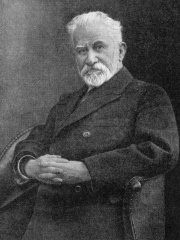


The Most Famous
ANTHROPOLOGISTS from Russia
This page contains a list of the greatest Russian Anthropologists. The pantheon dataset contains 93 Anthropologists, 3 of which were born in Russia. This makes Russia the birth place of the 6th most number of Anthropologists behind Germany, and Italy.
Top 3
The following people are considered by Pantheon to be the most legendary Russian Anthropologists of all time. This list of famous Russian Anthropologists is sorted by HPI (Historical Popularity Index), a metric that aggregates information on a biography's online popularity.

1. Andrey Korotayev (b. 1961)
With an HPI of 64.09, Andrey Korotayev is the most famous Russian Anthropologist. His biography has been translated into 47 different languages on wikipedia.
Andrey Vitalievich Korotayev (Russian: Андре́й Вита́льевич Корота́ев; born 17 February 1961) is a Russian anthropologist, economic historian, comparative political scientist, demographer and sociologist, with major contributions to world-systems theory, cross-cultural studies, Near Eastern history, Big History, and mathematical modelling of social and economic macrodynamics. He is currently the Director of the Centre for Stability and Risk Analysis at the HSE University in Moscow, and a Senior Research Professor at the Center for Big History and System Forecasting of the Institute of Oriental Studies as well as in the Institute for African Studies of the Russian Academy of Sciences. In addition, he is a senior research professor of the International Laboratory on Political Demography and Social Macrodynamics (PDSM) of the Russian Presidential Academy of National Economy and Public Administration, as well as a full professor of the Faculty of Global Studies of the Moscow State University. He is co-editor of the journals Social Evolution & History and Journal of Globalization Studies, as well as History & Mathematics yearbook Together with Askar Akayev and George Malinetsky he was in 2008–2018 a coordinator of the Russian Academy of Sciences Program "System Analysis and Mathematical Modeling of World Dynamics".

2. Mikhail Mikhaylovich Gerasimov (1907 - 1970)
With an HPI of 60.56, Mikhail Mikhaylovich Gerasimov is the 2nd most famous Russian Anthropologist. His biography has been translated into 26 different languages.
Mikhail Mikhaylovich Gerasimov (Russian: Михаи́л Миха́йлович Гера́симов; 2 September 1907 – 21 July 1970) was a Soviet archaeologist, and anthropologist who discovered the Mal'ta–Buret' culture and developed the first technique of forensic sculpture based on findings of anthropology, archaeology, paleontology, and forensic science. He studied the skulls and meticulously reconstructed the faces of more than 200 people, ranging from the earliest excavated Homo sapiens and neanderthals, to the Middle Ages' monarchs and dignitaries, including emperor Timur (Tamerlane), Yaroslav the Wise, Ivan the Terrible, and Friedrich Schiller. He led the expedition to open the tomb of Timur, despite being warned that the tomb was cursed.

3. Dmitry Anuchin (1843 - 1923)
With an HPI of 56.06, Dmitry Anuchin is the 3rd most famous Russian Anthropologist. Her biography has been translated into 22 different languages.
Dmitry Nikolayevich Anuchin (Russian: Дми́трий Никола́евич Ану́чин; 27 August 1843 – 4 June 1923) was a Russian anthropologist, ethnographist, archaeologist, and geographer. He was a member of the Russian Geographical Society and convened the ethnographic sub-section of the 12th Congress of Russian Natural Scientists and Physicians(XII съезда русских естествоиспытателей и врачей) held in Moscow in 1909. Here he pushed for the professionalisation of ethnography as compared to missionaries and amateurs. However he opposed Lev Sternberg's call for the establishment of an imperial bureau of ethnography, fearing that the discipline would become too tied up with the Tsarist bureaucracy. However, in 1915 he did become involved with the Commission for the Study of the Natural Productive Forces (KEPS) which assisted in the wartime mobilisation of resources in the Russian Empire. He argued for a second government-sponsored commission to study the population along the lines of the American Bureau of Ethnology. The Russian Academy of Sciences dismissed his proposal as unrealisable, but did establish within KEPS a Committee for the Description of Russia by Region. This turn around has been explained as arising from the situation when there was little scope for ethnographers to do independent research as many had been drafted into military hospitals and similar institutions to help with the war effort. The crater Anuchin on the Moon, Anuchin Institute of Anthropology at Moscow State University, a glacier in Novaya Zemlya, one of the Kuril Islands and a mountain in Ural are named after him.
People
Pantheon has 3 people classified as Russian anthropologists born between 1843 and 1961. Of these 3, 1 (33.33%) of them are still alive today. The most famous living Russian anthropologists include Andrey Korotayev. The most famous deceased Russian anthropologists include Mikhail Mikhaylovich Gerasimov, and Dmitry Anuchin.

